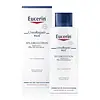What's inside
What's inside
 Key Ingredients
Key Ingredients

 Benefits
Benefits

 Concerns
Concerns

 Ingredients Side-by-side
Ingredients Side-by-side

Water
Skin ConditioningSodium Lauroyl Sarcosinate
CleansingCocamidopropyl Hydroxysultaine
CleansingGlycerin
HumectantNiacinamide
SmoothingGluconolactone
Skin ConditioningSodium Methyl Cocoyl Taurate
CleansingPEG-150 Pentaerythrityl Tetrastearate
EmulsifyingCeramide NP
Skin ConditioningCeramide AP
Skin ConditioningCeramide EOP
Skin ConditioningCarbomer
Emulsion StabilisingCalcium Gluconate
HumectantSalicylic Acid
MaskingSodium Benzoate
MaskingSodium Lauroyl Lactylate
EmulsifyingCholesterol
EmollientPhenoxyethanol
PreservativeDisodium EDTA
Tetrasodium EDTA
Hydrolyzed Hyaluronic Acid
HumectantPhytosphingosine
Skin ConditioningXanthan Gum
EmulsifyingEthylhexylglycerin
Skin ConditioningWater, Sodium Lauroyl Sarcosinate, Cocamidopropyl Hydroxysultaine, Glycerin, Niacinamide, Gluconolactone, Sodium Methyl Cocoyl Taurate, PEG-150 Pentaerythrityl Tetrastearate, Ceramide NP, Ceramide AP, Ceramide EOP, Carbomer, Calcium Gluconate, Salicylic Acid, Sodium Benzoate, Sodium Lauroyl Lactylate, Cholesterol, Phenoxyethanol, Disodium EDTA, Tetrasodium EDTA, Hydrolyzed Hyaluronic Acid, Phytosphingosine, Xanthan Gum, Ethylhexylglycerin
Water
Skin ConditioningUrea
BufferingGlycerin
HumectantIsopropyl Stearate
EmollientDicaprylyl Ether
EmollientGlyceryl Glucoside
HumectantSodium Lactate
BufferingButyrospermum Parkii Butter
Skin ConditioningTapioca Starch
Polyglyceryl-4 Diisostearate/Polyhydroxystearate/Sebacate
EmulsifyingCarnitine
CleansingCetearyl Alcohol
EmollientCeramide NP
Skin ConditioningArginine Hcl
Skin ConditioningSodium PCA
HumectantHistidine
HumectantAlanine
MaskingCitrulline
Skin ConditioningLysine
Skin ConditioningSerine
MaskingLactic Acid
BufferingSodium Chloride
MaskingMannitol
HumectantSucrose
HumectantGlutamic Acid
HumectantThreonine
Glycogen
Humectant1,2-Hexanediol
Skin ConditioningPhenoxyethanol
PreservativePotassium Sorbate
PreservativeArginine
MaskingPCA
HumectantWater, Urea, Glycerin, Isopropyl Stearate, Dicaprylyl Ether, Glyceryl Glucoside, Sodium Lactate, Butyrospermum Parkii Butter, Tapioca Starch, Polyglyceryl-4 Diisostearate/Polyhydroxystearate/Sebacate, Carnitine, Cetearyl Alcohol, Ceramide NP, Arginine Hcl, Sodium PCA, Histidine, Alanine, Citrulline, Lysine, Serine, Lactic Acid, Sodium Chloride, Mannitol, Sucrose, Glutamic Acid, Threonine, Glycogen, 1,2-Hexanediol, Phenoxyethanol, Potassium Sorbate, Arginine, PCA
 Reviews
Reviews

Ingredients Explained
These ingredients are found in both products.
Ingredients higher up in an ingredient list are typically present in a larger amount.
Ceramide NP is a type of ceramide and formally known as ceramide 3.
Ceramides are intercellular lipids naturally found in our skin that bonds dead skin cells together to create a barrier. They are known for their ability to hold water and thus are a great ingredient for dry skin.
Ceramides are an important building block for our skin barrier. A stronger barrier helps the skin look more firm and hydrated. By bolstering the skin ceramides act as a barrier against irritating ingredients. This can help with inflammation as well.
If you would like to eat ceramides, sweet potatoes contain a small amount.
Read more about other common types of ceramides here:
Ceramide AP
Ceramide EOP
Glycerin is already naturally found in your skin. It helps moisturize and protect your skin.
A study from 2016 found glycerin to be more effective as a humectant than AHAs and hyaluronic acid.
As a humectant, it helps the skin stay hydrated by pulling moisture to your skin. The low molecular weight of glycerin allows it to pull moisture into the deeper layers of your skin.
Hydrated skin improves your skin barrier; Your skin barrier helps protect against irritants and bacteria.
Glycerin has also been found to have antimicrobial and antiviral properties. Due to these properties, glycerin is often used in wound and burn treatments.
In cosmetics, glycerin is usually derived from plants such as soybean or palm. However, it can also be sourced from animals, such as tallow or animal fat.
This ingredient is organic, colorless, odorless, and non-toxic.
Glycerin is the name for this ingredient in American English. British English uses Glycerol/Glycerine.
Learn more about GlycerinPhenoxyethanol is a preservative that has germicide, antimicrobial, and aromatic properties. Studies show that phenoxyethanol can prevent microbial growth. By itself, it has a scent that is similar to that of a rose.
It's often used in formulations along with Caprylyl Glycol to preserve the shelf life of products.
Water. It's the most common cosmetic ingredient of all. You'll usually see it at the top of ingredient lists, meaning that it makes up the largest part of the product.
So why is it so popular? Water most often acts as a solvent - this means that it helps dissolve other ingredients into the formulation.
You'll also recognize water as that liquid we all need to stay alive. If you see this, drink a glass of water. Stay hydrated!
Learn more about Water